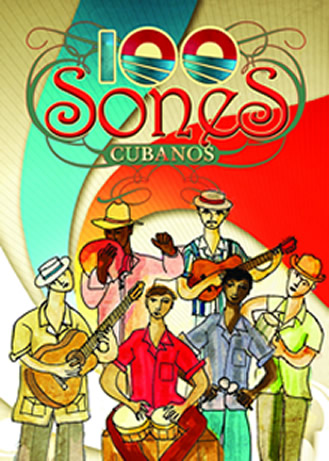Indice - Table of contents
Lo Nuevo[hide]
Reportes: From The St... : Cubadisco 2...
Fotos: Tom Ehrlich
Staff: Kristina Lim
Musicos: Juan Formell
Musicos: Yordamis Megret Planes
Musicos: Yasser Morejón Pino
Musicos: José Luis "Changuito" Quintana...
Musicos: Dennis Nicles Cobas
Fotos: Eli Silva
Grupos: Ritmo Oriental : 1988 - Vol. IX - 30 a...
Musicos: Rafael Paseiro Monzón
Musicos: Jiovanni Cofiño Sánchez
Fotos: Tom Ehrlich : 2024 Monterey Jazz, P...
Resenas: Vacilón Santiaguero (Circle 9 ...
Fotos Del Día [hide]
Interviews & Reviews - Film Review - Los 100 Sones Cubanos
Film Review - Los 100 Sones Cubanos
Cuba, 2010, Directed by Edesio Alejandro and Rubén Consuegra
Review by Bill Tilford, All rights reserved

Los 100 Sones Cubanos is an 81-minute film made in support of a recently-issued 5-CD collection of Cuban Sones by various groups. It is an entertaining and at times informative film if taken on its own terms -- the objective appears to have been primarily to celebrate the popularity and importance of the Son, and before we take a look at the film's virtues, we should begin with what it is not:
1. It is not a complete history of the Son. If you are a novice, you should not expect to walk out of this movie with a full understanding of the genre. In fact, several key twentieth-century elements (such as the development of the Son Habanero and the role of Ignacio Piñeiro in modernizing it in the 1920s just for one example) are practically omitted in favor of stressing the early origins in the eastern provinces.
2. Although the film makes a point of stating that there are key differences between other styles such as Changüi and the Son, and it does include live performances that those of us who are musicians can use to discern the differences, the level of technical detail in the discussions about those distinctions is very limited. "General audience" viewers would probably actually consider that a good thing, but musicians should adjust their expectations accordingly.
3. As we mentioned in (1), a viewer expecting a comprehensive history would be faced with several instances of the omission or underemphasis of several key figures in the music's history. If one mistakenly took this movie to be an authoritative treatment from the beginning up to the present, one would walk away with a slightly distorted few of the relative importance of various individuals.
On the other hand, the movie does have some virtues that make it worth watching:
1. There are some very good discussions of some of the musical forms that preceded the Son such as the Nengón (the film explains that the Nengón Serrano in particular was a direct ancestor of the Son), a nice segment about the Bantu and Dahomeyan contributions to the music (and a seldom-heard acknowledgment of the role of indigenous music in the eastern provinces), and short but welcome mentions of some flourishes such as the ruñidera and the morumba. It would be nice to see some future filmmaker expand those discussions.
2. There are excellent live performances with the early instruments used in the music including (among others) the botija, the marimbula, various bamboo instruments and the special organs used in Manzanillo.
3. The film does a commendable job of explaining the role of several different families in the early music as well as highlighting some key differences in styles and instrumentation originating in various locales such as Santiago de Cuba, Manzanillo, San Luis etc. Since much of what has been done before this film has frequently stressed Havana or Santiago de Cuba specifically, the movie does add some welcome detail to the story of the music.
4. There are some extended scenes with Candido Fabre and Beny Villy (the world's best Beny Moré impersonator) that would be extraneous in an historical documentary but work quite well as entertainment.
5. The live band scenes are well-done.
The Verdict: This film is worth watching as an entertainment during which you will also happen to learn a few things that you might not have known about early Cuban music. It should definitely not be mistaken for the last word about the music's history, but it does add some welcome details to the larger narrative, and the music is worth the price of the ticket.

















